In my most recent hobby history post, on Gar Miller (here:
http://www.net54baseball.com/showthread.php?t=234348), darkhorse9 asked if I could write something about another mail-order dealer, Jim Elder of Odessa, Florida. Elder frequently advertised in hobby publications of the mid-to-late 1960s (as James T. Elder), and one of his ads sparked an exchange that in many ways epitomized the collecting culture of the late 1960s -- when the hobby was starting to grow more quickly and prices were rising, but card conventions had not yet arrived on the scene, and it was still a fairly insular subculture in many ways.
First, let me give a little background before I post any of Elder's ads. Throughout the 1950s and most of the 60s, the hobby of collecting baseball cards was dominated by kids and teenagers, with a relatively small number of adult men, most of whom felt a need to keep a low profile because it was considered weird. The main hobby publications of the late 1950s and early 1960s were mostly published by men born in the early 20th century: Card Comments (1958-1961) by Gordon Taylor and The Card Collector (1959-1964) by Woody Gelman, both aimed at children and teens, and Sport Fan (1951-1961) by Bob Jaspersen and Card Collector's Bulletin by Charles Bray, both aimed at adults. The one exception was The Sport Hobbyist, founded by Charles Brooks in 1956 when he was in high school, and containing a mixture of serious hobby research for adult collectors and articles aimed at younger collectors.
All of these publications struggled to stay afloat, whether due to financial reasons (as with Card Comments and The Card Collector, as I detailed in this post:
http://www.net54baseball.com/showthread.php?t=233392) or due to personal problems (for Sport Fan, Bob Jaspersen's health problems; for The Sport Hobbyist, Charles Brooks and Laverne Isenberg's military service). As I mentioned in the post linked immediately above, the hobby went through a period of stagnation in the early to mid-1960s, and a whole series of hobby publications launched during this period, only to fold within a year or two. Unlike the earlier publications noted above, these were mostly published and edited by young men, primarily high school or college age. (I've posted articles from some of these publications, and may write more about some of them sometime.) One publication that lasted longer than most was The Sports Trader, launched by Richard Burns in September 1964, which quickly grew to have the largest circulation in the hobby. James T. Elder was a regular advertiser; below is his ad from the April 1965 issue (volume 1, no. 6), as an example. At this point he was mostly dealing in publications, and he had a 20-page price list that he would send to anyone who asked, as seen in the ad.
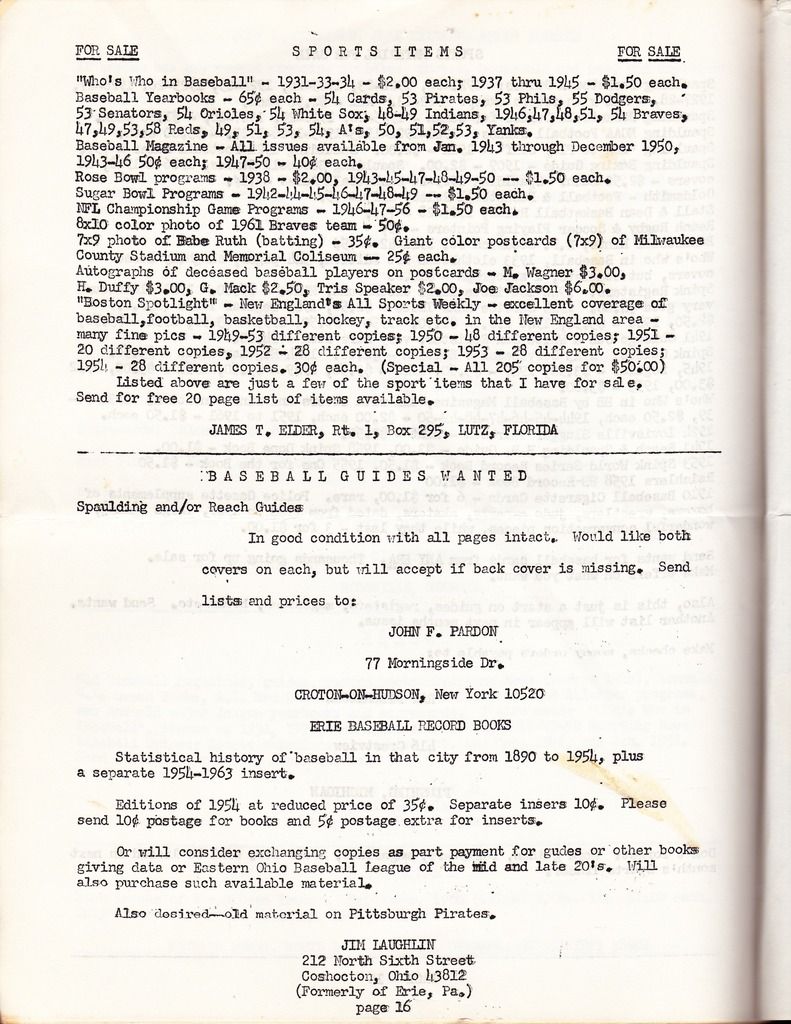
But even this successful hobby paper ran into problems. In April 1966, Burns changed the format of The Sports Trader from typewritten and mimeographed to typeset and printed on newsprint, but the costs proved to be more than he had anticipated. Then he was called up by the Army National Guard and had to suspend publication for several months, since it was a one-man operation, like basically all the hobby papers at the time. (Military service was a common threat to hobby publications, given the demographics of the publishers. In July 1967, Sports Collector's Journal was launched by Steve Mitchell, a member of this board (hi, Steve!) right after he graduated from high school, and it published a lot of great articles before folding a couple of years later when Steve went into the military.)
Richard Burns changed The Sports Trader back to a mimeographed publication with the September 1967 issue, and for a while it did very well, with some issues surpassing 50 pages. James T. Elder continued to advertise pretty regularly, now with a wider variety of material. Below are the four full-page ads he had in the January 1968 issue of The Sports Trader, including one devoted to his set of 950 postcard photos and one devoted to baseball cards, including T3s for $4 each, E105s for $2.50 each, T206s at 10 for $3.50, and T210s at 10 for $20. He had several different price lists, which he was now charging for.
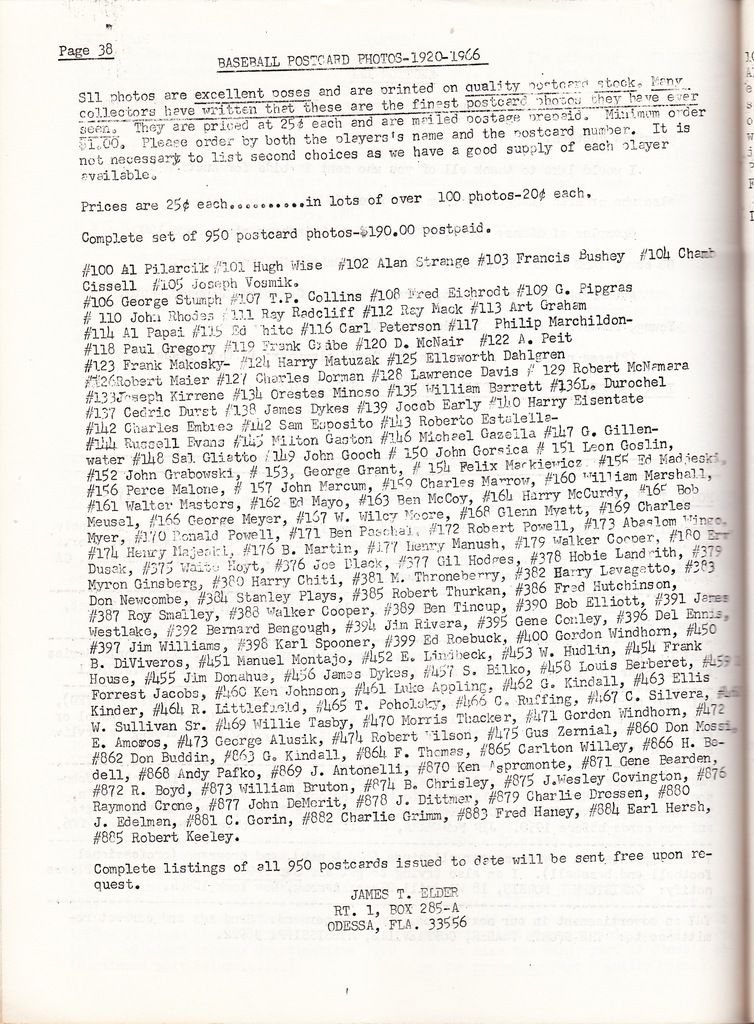
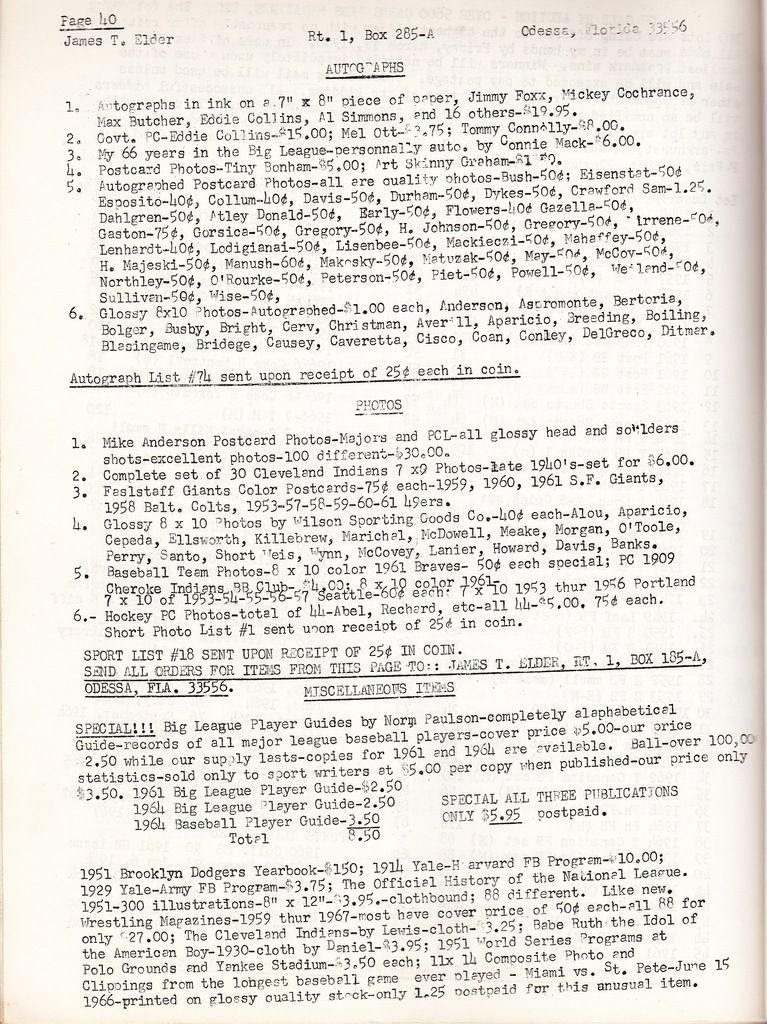
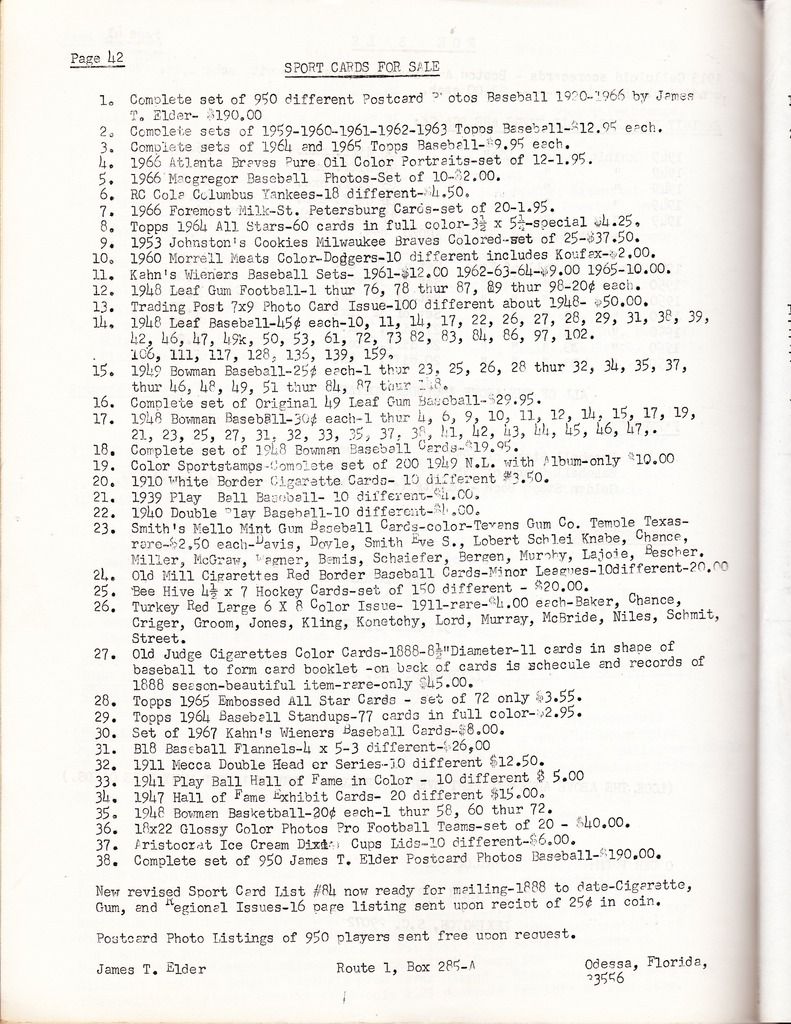
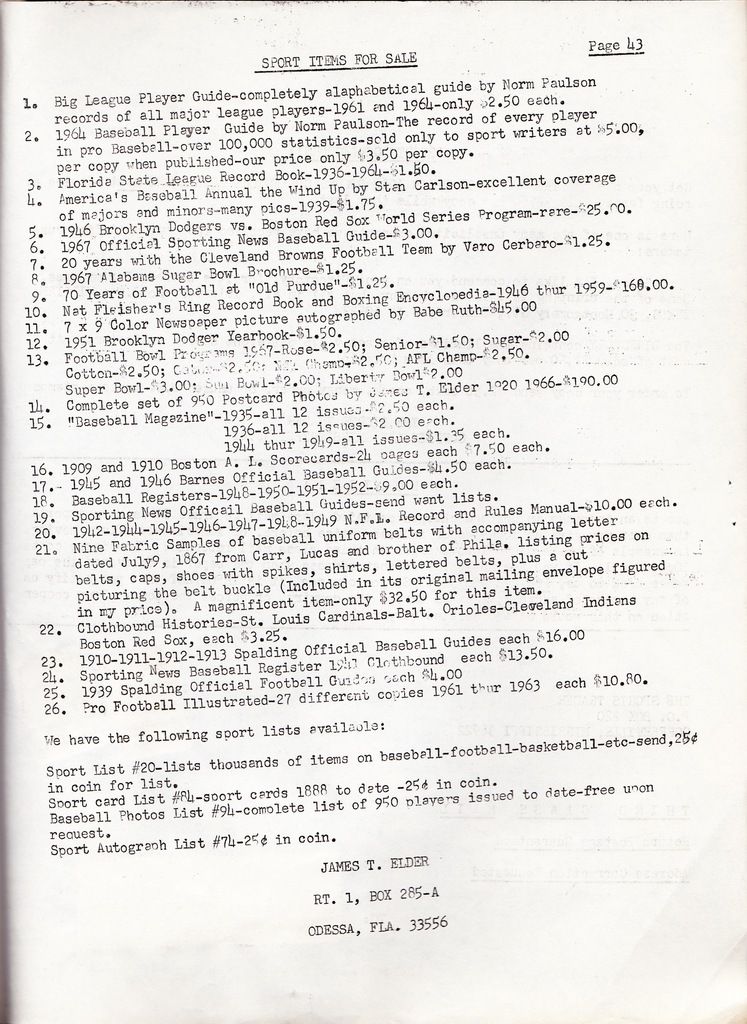
In February 1968, one month after the above ads appeared, a new hobby publication launched: Sports Collectors' News, edited by Mike Bondarenko, who was 16 years old but wrote like someone older than that. SCN was mimeographed like The Sports Trader, and the two papers became significant rivals, both of them regularly publishing letters to the editor that could often get lengthy and opinionated. Bad blood soon developed between Burns and Bondarenko, partly because SCN had an anonymous columnist named "The Old Prospector" who wrote snarky commentary about rival publications, including The Sports Trader, and got under Burns's skin. But the two men also had different philosophies: Bondarenko didn't like rising prices in the hobby and made a point of saying that he operated SCN on a non-profit basis, while Burns saw himself as a capitalist running a business, and thought that sellers should be able to charge whatever prices the market would bear. It didn't help that Burns tended to take offense easily at perceived slights. This resulted in a lot of drama between the two publications in 1968-69, with a good illustration being an exchange stemming from one of James T. Elder's ads.
In the November 1968 Sports Trader, Elder had three full-page ads: one for back issues of sports hobby publications, one for cards and publications (including T206s and 1940 Play Balls), and one for his baseball postcard photos, which now numbered 1400 different. Note that he was selling T206 Hall of Famers for $1 to $2.50, as opposed to 35 cents for commons. He also had several smaller ads for autographs (which I didn't scan), and on the back page he had an ad for his Sport List #34, for publications, and his Sport Card List #86 and his Sport Card Auction #7.
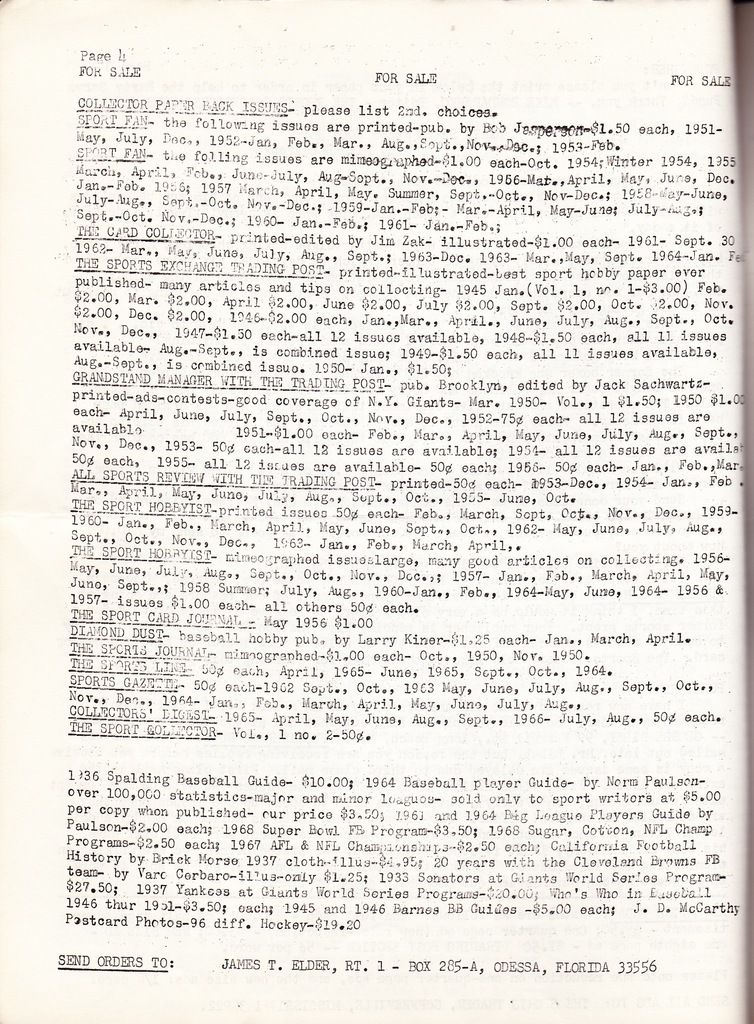
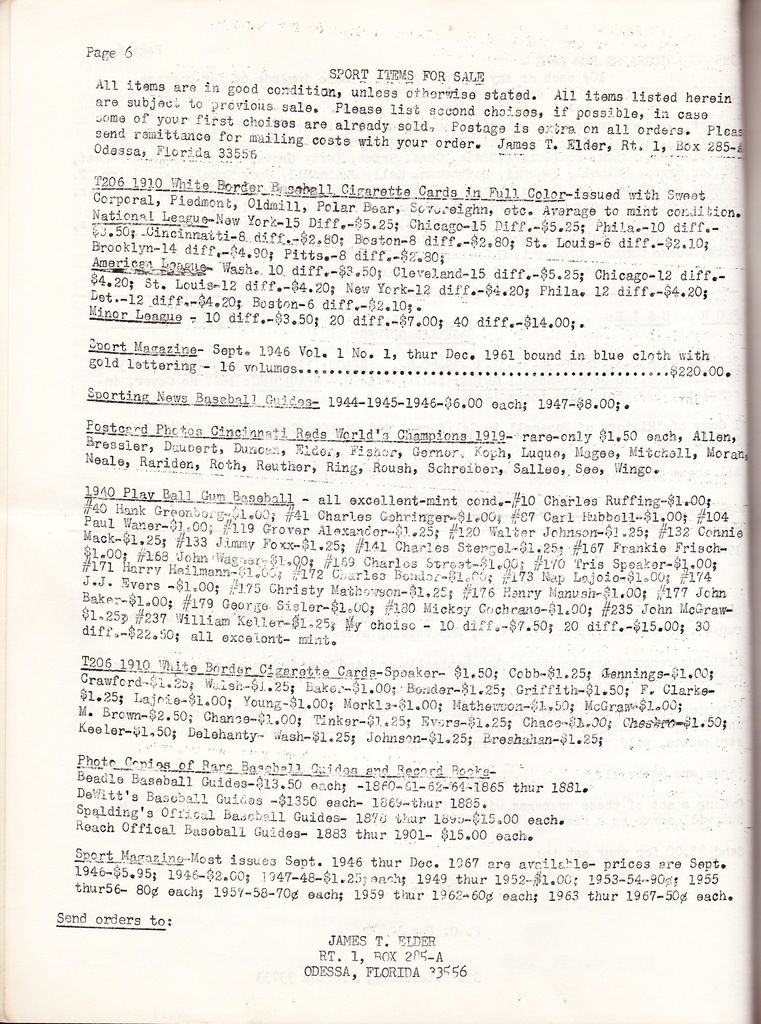
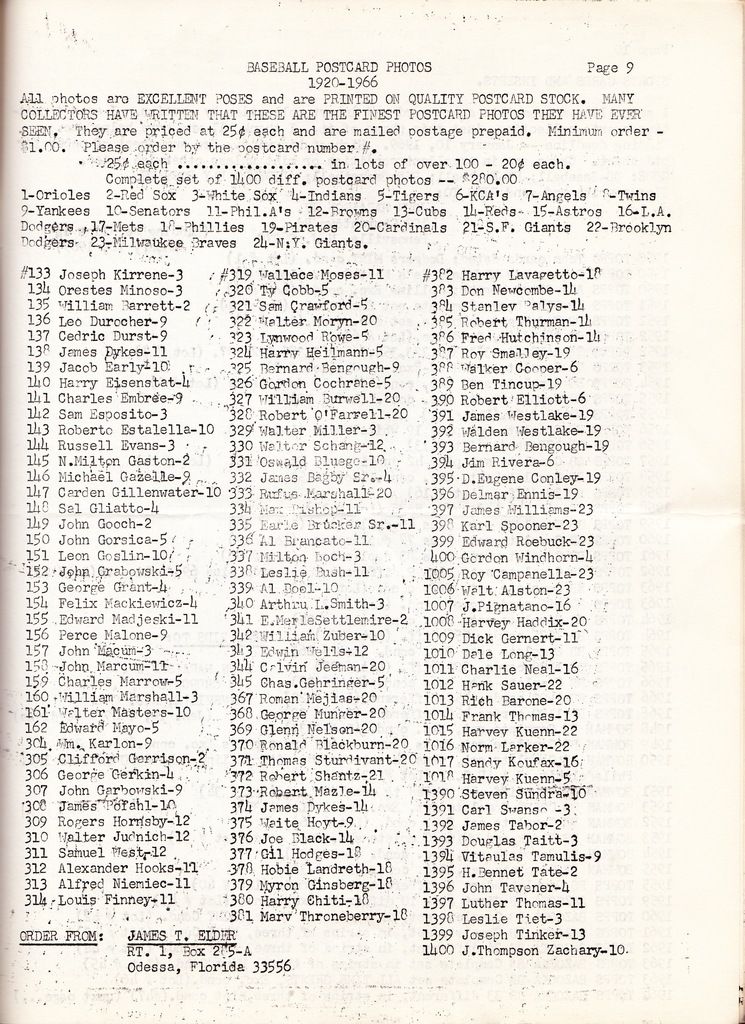
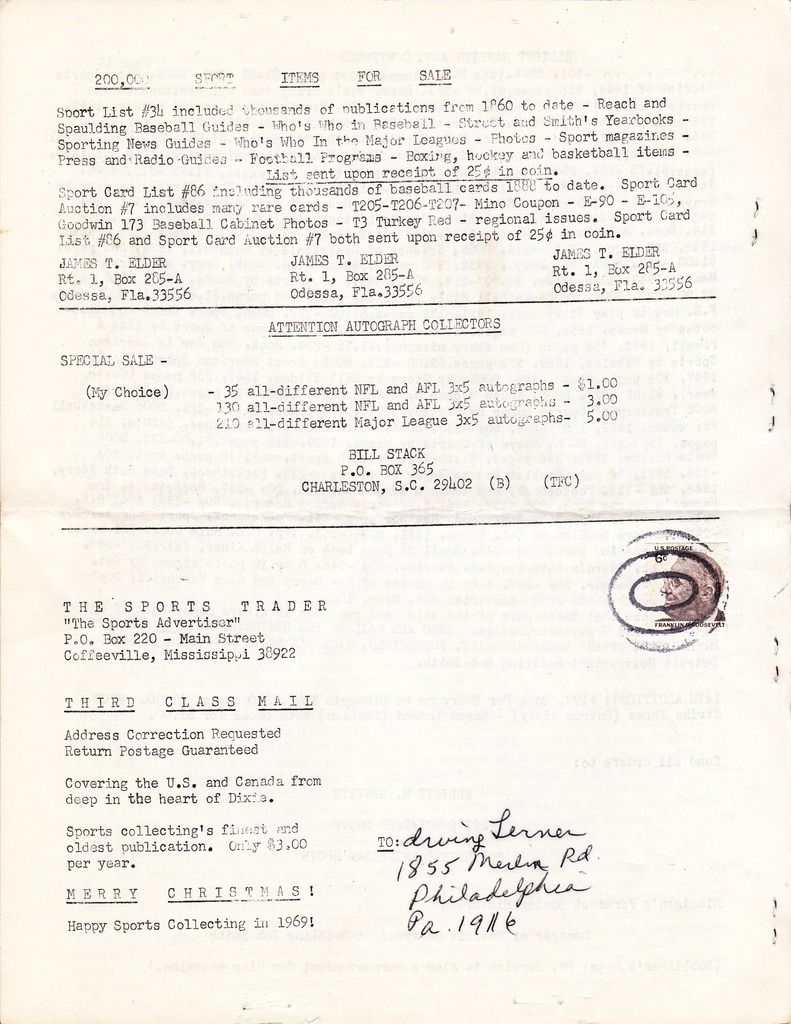
Collector John Gondek saw Elder's ad for old hobby publications and got very excited. He made a list of the ones he wanted, but when he totaled them up, it came to $159.75, way more than he had bargained for. Suffering from sticker shock, he wrote an indignant article and sent it to Mike Bondarenko, with a copy also going to Richard Burns. Burns wrote a reply defending Elder's pricing practices, sending it to both Gondek and Bondarenko, and Gondek then wrote a rebuttal to Burns's reply. Bondarenko published all three letters in the January 1969 Sports Collectors' News with some commentary framing it as "The Great Debate".


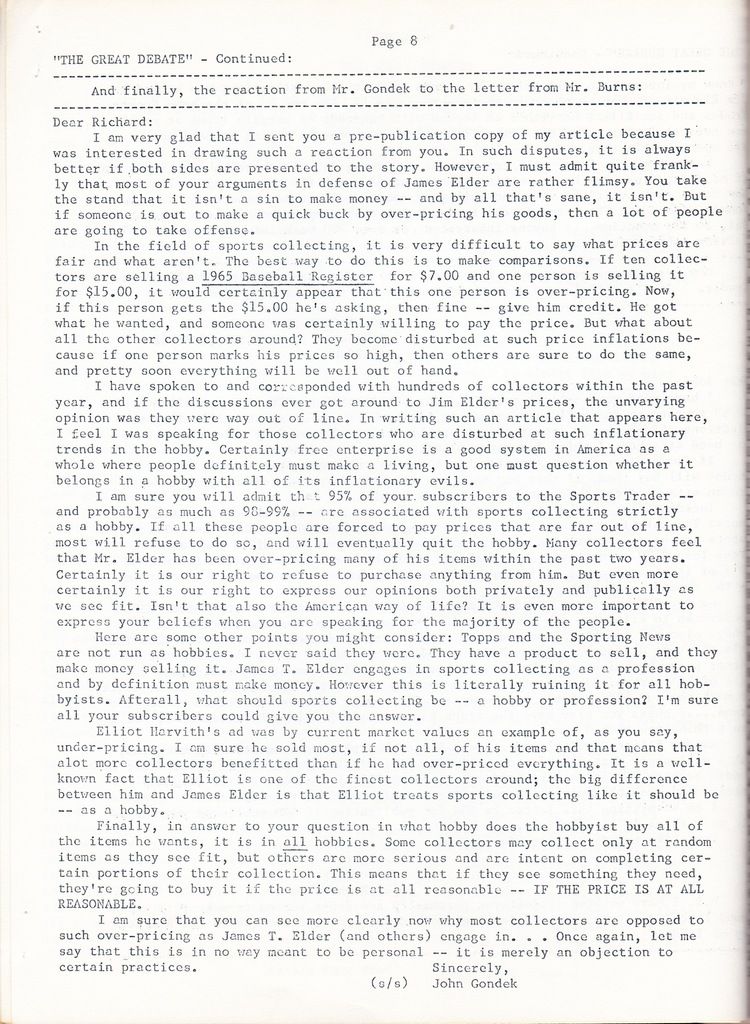
In retrospect, it's not too hard to see here the seeds of the issues that would lead to the hobby's explosive growth in the following decade. The baby boomers who had collected baseball cards as kids in the 1950s were now older, many of them in college, with the oldest of them now (in 1968) graduating from college and earning money, if we define the start of the baby boom as 1946. That resulted in gradually increasing demand for cards and rising prices, and that trend would accelerate in the 1970s as nostalgia for the 1950s became popular (see: Happy Days), and more people who had collected cards back then had money to spend. Of course, that wasn't the only reason for the collecting boom and rising prices of the 1970s (and then the 1980s), but it seems pretty clear to me that demographics played a part.